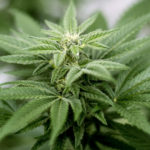No other single plant, it seems, is connected so directly to so many aspects of human health and wellbeing, as cannabis.
 My interest in plant medicine traces back to my days as a culinary historian, learning about foraging for wild edibles in the Galilee. These local varieties were not only flavorful and nutritious; they invariably packed potent medicinal properties: wild asparagus boosted the kidneys, for example, and oil infused with zaatar (Syrian marjoram) could cure a whole host of ills.
My interest in plant medicine traces back to my days as a culinary historian, learning about foraging for wild edibles in the Galilee. These local varieties were not only flavorful and nutritious; they invariably packed potent medicinal properties: wild asparagus boosted the kidneys, for example, and oil infused with zaatar (Syrian marjoram) could cure a whole host of ills.
For scientists, the healing powers of plants makes them a reliable starting point for the investigation and development of new drugs – think aspirin from willow bark or morphine out of poppies. Now researchers have high hopes for cannabis (another Middle-Eastern native), as science is confirming what is already known anecdotally about the plant’s many and varied healing powers.
The THC Trail
Long before the FDA approved the first cannabis plant-based drug this past year, the study of cannabis had already led to a discovery the likes of which no other plant may have ever revealed. Following the trail of THC – the psychoactive compound, or cannabinoid, in cannabis – scientists uncovered an entire, previously unknown physiological system, which plays a major role in regulating health and disease.
The search to understand how cannabis exerts its psychoactive effects led to the discovery of a unique category of receptors in the brain that are activated by THC. Further studies revealed that these receptors are actually spread throughout the organs, connective tissues, glands and immune cells, extending out to the peripheries of the body. Clearly, they surmised, such a vast and differentiated network of cannabinoid-sensitive receptors didn’t evolve because of the existence of the cannabis plant.
The missing piece to the puzzle came with the discovery that, in response to different types of stress and physiological imbalances, the body actually produces its own (endogenous) cannabinoids – similar in their chemical structure to the cannabinoids in cannabis. The endogenous cannabinoids and the receptors they interact with are known as the endocannabinoid system.
A Bridge Between Body and Mind
This newly identified system is now recognized as being involved, to varying degrees, in almost every physiological process – from inflammation and pain to digestion and fertility. The editor of an article in the journal Cerebrum explains: “With its complex actions in our immune system, nervous system, and virtually all of the body’s organs, the endocannabinoids are literally a bridge between body and mind” (bold added).
Different cannabinoids – whether derived from plants or synthetically produced – are now under intense scrutiny by scientists for their anti-inflammatory, antioxidant, anti-tumoral, anti-spasmodic, anti-psychotic, anti-convulsive, and neuroprotective properties. Virtually every day, results are published from laboratory tests on the effects of cannabinoids at the cellular level, and from clinical studies on patients, pointing to the beneficial effects of cannabis-based medicine. No other single plant, it seems, is connected so directly to so many aspects of human health and wellbeing, as cannabis.
Obstacles to Research
Ironically, many of these studies come from overseas, since US federal laws severely restrict cannabis research, even in states where medical cannabis is legal. In the meantime, each new scientific insight, and each new patient who benefits from a cannabis-based treatment, contributes to the groundswell of demand for medical cannabis sweeping this country. I expect we will soon see changes in legislation that will loosen the bottleneck on cannabis research, and unlock the full healing potential of this remarkable plant.
PS: If you subscribed to my previous blog and are now receiving these posts, I hope they are of interest. If not, your un-subscribing will not be taken personally!
I learned a lot here. Thanks so much !
Super interesting! I like this new direction.